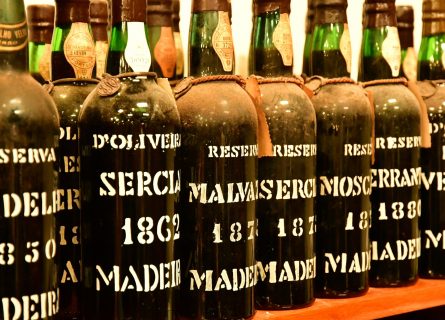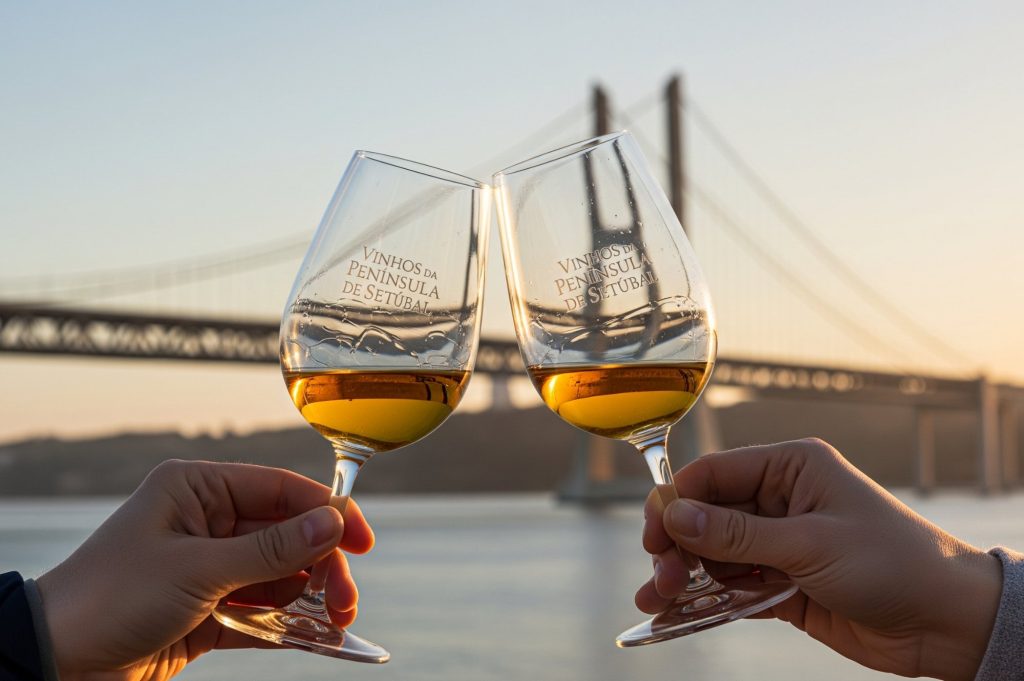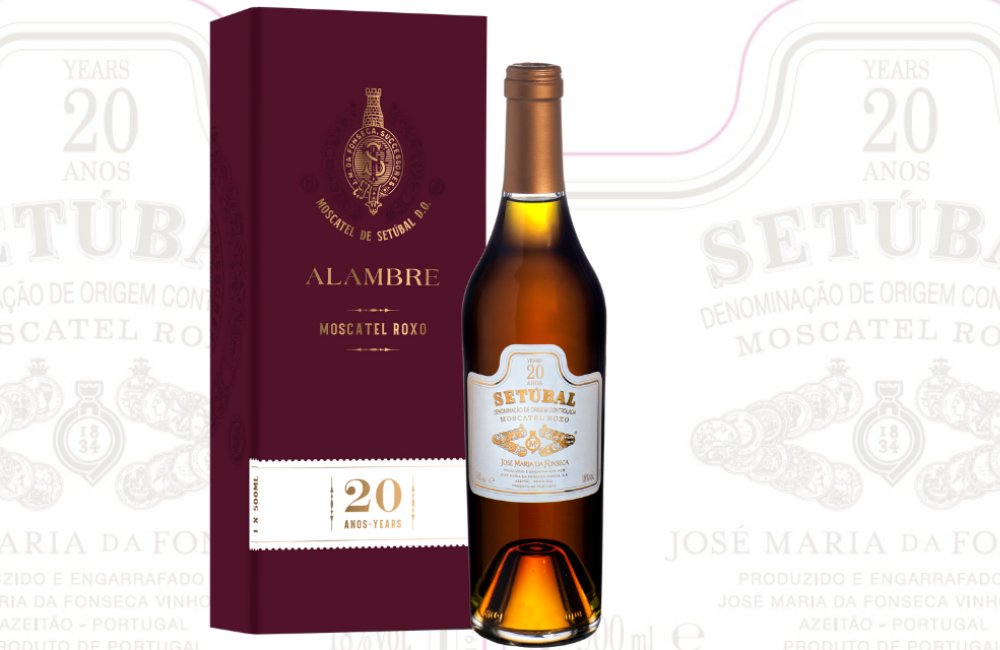
Madeira: The Fortified Wine That Defies Time
June 9, 2025
Explore the rich flavors of Madeira wine, from fig to caramel, and discover its exceptional longevity and character.
By: Barnaby Eales / Last updated: July 15, 2025
Name a country that has a rich and varied fortified wine production, such as Portugal. I bet you can’t. Port and Madeira wines are renowned as being amongst the world’s finest age-worthy wines, but Portugal’s strengths in fortification spread further afield to the plains and hills of Setubal, the Douro, Carcavelos, and Bucelas near Lisbon.

Sweet and musky aromas pervade the air in the cool quietude of the old wine cellars of José Maria Fonseca (JMF), the Setúbal producer that shaped not only the region’s wines from the mid-19th century onward, but those of Portugal (it was the first producer to bottle wine in Portugal). In this vestige of vinous quintessence, Portugal’s finest collection of old fortified Moscatel Setubal wines age gracefully in barrels serenaded by Gregorian chants, including wines made in the 1800s.
Granted, Portugal’s Port and Madeira fortified wines may be better known, but just south of Lisbon, a trip across Europe’s longest bridge, the Vasco de Gama Bridge, leads us to this singular historical region of wine production. Mystery surrounds the production origin of Moscatel de Setubal. JMF’s long-term oenologist, Domingos Soares Franco (who retired in the summer of 2025), says JMF owns a wine list dated 1797, which includes Moscatel de Setubal. The original document is kept at the JMF House Museum, a manor house in the heart of Vila Nogueira de Azeitão, open to visitors and tastings.
Unlike in Douro and Madeira, there were no British families making wine in Azeitão.
However Soares Franco told the Portuguese online newspaper Dinheiro Vivo in May 2025:
“Whoever created Moscatel de Setúbal copied the English.”
In the 15th and 16th centuries, during Portugal’s age of discovery, wine traveled on ships and galleons to India and Brazil. Sea captains, who received a commission on what they sold, but were not always able to sell all of it. Upon returning to Portugal, after their journey, during which the barrels were subjected to various climates and significant temperature fluctuations.
The voyage through the tropics—on the way to Brazil, Africa, or India, often crossing the Equator one or more times—serendipitously enhanced the quality of the Moscatel de Setúbal and gave it great complexity.
Known for its orange and amber (that darkens with age) color, Moscatel de Setúbal wine became known in greyer Northern Europe as ‘The sun in a bottle.’
The predominant grape variety is the aromatic Moscatel de Setúbal, a synonym for Moscatel de Alexandria. It is grown in Setubal – Portugal’s second oldest demarcated wine region as of 1907. Moscatel de Setúbal is known to be less sweet and more acidic than Moscatel Roxo, a purplish mutation used to make fruitier wines with sweeter flavors, but also enables producers to make balanced and more complex, structured wines with subtle elegance. The finest examples of Setubal grapes are said to grow on limestone soils on the north-facing slopes of the Arrabida hills – most grow on the plains of the Setubal region.
Singularity in the production of Moscatel de Setúbal is the wine’s celebrated lengthy maceration on skins for minimum of three months and often around five to six months following fermentation, providing the wines with their orange-amber colour, depth and texture on the palate. Like Port and Madeira, Moscatel de Setúbal wines are fortified with brandy (aguardente) – the time of fortification will determine the sweetness levels, as the fortification stops the fermentation – earlier fortification means there is more residual sugar in wines. José Maria Fonseca is renowned for experimenting with the use of Armagnac and Cognac to fortify wines, with Armagnac favored in results.
The most common way to age Moscatel de Setúbal is by using oak barrels. Eighteen months is the minimum legal time of ageing for Moscatel, but the refined Moscatel Roxo de Setúbal is aged for at least 36 months. Some producers may decide to age their wines longer or to use specific barrels, be it old rum or whisky barrels.
Moscatel de Setúbal wine is nothing short in terms of explosive, exuberant flavors and aromas, where a delicate balance is struck between sweetness, acidity, freshness, and alcohol. Notes of orange blossom, rose and dried fruits like apricot; fruity, floral, heady, silky in their youth and when aged, the wine has a golden color, which goes from topaz to amber, with a velvety texture and intense palate; notes of marmalade, nuts, such as walnuts, hazelnuts, raisins, spices and cherry, caramel and fig compotes prevail as well as notes of coffee and chocolate in very old expressions.
| Superior: | with a minimum of five years of age and have obtained the outstanding quality rating in the Chamber of tasters |
| Reserva: | only with an outstanding quality rating in the Chamber of tasters. |
| Moscatel de Setúbal Datado: | Vintage year of harvest. It means that this Moscatel de Setúbal is not a blend or a mixture of different grapes. It is only Moscatel de Setúbal from that vintage. |
| Moscatel de Setúbal Não Datado: | means that this Moscatel de Setúbal is a blend or a mixture of different grapes. It is made of Moscatel of Setúbal grapes from other years. |
The best Moscatel de Setubal wine is said to be that made from old vines and aged over long periods.
The “Chamber of Tasters” (Câmara de Provadores) is the official panel of accredited tasters within every Portuguese regional wine commission that blind-tastes and scores each wine.
Moscatel do Douro is fortified and aged in the same way as Moscatel of Setubal but made from Moscatel do Galego Branco, a synonym for Muscat Blanc à Petit Grains. This grape is known for making smaller berries with aromatic grapey aromas. Unlike the Setubal maritime setting, Moscatel de Douro grapes are grown inland, mainly in the Favaios hearland of the Douro Valley on schist soils at higher altitudes than in Setubal, often providing wines with higher acidity levels. Moscatel do Douro wines are usually lighter and more floral than their Setubal counterparts and can be less oxidative.
Key producers:
Carcavelos maybe a small appellation due to the expansion of the urban sprawl, in the Lisbon region but its rich in controversial history; the wine region was created by Portugal’s autocratic prime minister the Marquis de Pombal in the 18th century as a way of establishing recompense for his own estate’s grapes – he even allowed blending of Port wine in the region. Carcavelos is renowned for making fortified wines that were exported in the 19th century, from blends of Arinto, one of my favourite Portuguese grapes due to its pronounced acidity, Galego Dourado, and Ratinho.
Villa Oeiras is a leading producer, making Carcavelos with notes of sweet orange and dried stone fruit and floral aromas – ageing provides nuttiness and caramel notes. Carcavelos Superior, aged on average for 14 to 15 years in barrels, produces wines with an oxidative style, featuring flavours of figs, raisins, and pronounced nuts, including walnut and almond.
Read more about the Carcavelos Wine Region
Historically, a revered wine sub-region renowned for its high-end Arinto; think bright acidic, mineral, and citrussy still wines, rather than its fortified wines. That said, Bucelas has a long history of fortification; Charneco wine mentioned in Shakespeare’s King Henry IV play is thought to have been a Bucelas fortified wine also made by the Duke of Wellington.
Read more about the Bucelas Wine Region
Fortified wines of Setubal, Lisbon, and the Douro can be enjoyed as aperitifs, dessert wines, and in cocktails – mixed with ginger ale and lemon or lime, for instance. The classic combination of aged, fortified Setubal is Christmas pudding. Indeed, taste the depth in flavour of JMF’s 20-year-old Alambre, amber orange with Christmas-pudding richness and made up of 19 vintages of Moscatel de Setúbal, the oldest being up to 80 years old. Sensational.

My favourite pairing for dessert tasted at Casa Palmela located in the foothills of the Serra da Arrábida, was José Maria da Fonseca’s Alambre Moscatel Roxo de Setúbal’s paired with Portuguese classic caramel pudding called Abade de Priscos; the traditional glass of Port is substituted for one of Moscatel, but the full complement of 15 egg yolks(!) remains the same.
For food pairings, think local: the best type of cheese to pair with Moscatel de Setúbal is the salty and cured ones, like the local Azeitão cheese and blue or aged cheese.
Try local desserts like citrus and chocolate, fig tarts, and Portugal’s ubiquitous egg custard tarts, the Pasteis de Nata. Fortified wines of Setubal, Lisbon, and the Douro pair well with foie gras, roast duck, and Moroccan lamb made with dried stone fruits.
Milk chocolate: A younger Moscatel de Setúbal is recommended, for its exuberant orange and orange blossom aromas and the dairy ‘fat’ factor.
Bittersweet Chocolate: Chocolates with 50% and 60% cacao are an easy combination, so the art here is to make the pairing match the expected result, to taste. Moscatel de Setúbal is, by nature, a sweet wine, so if you are “drawn” to the wine’s sweetness, you should look for an aged Moscatel de Setúbal, with over 5 years of age, as well as a Moscatel Roxos de Setúbal. If the goal is to emphasise the chocolate, a younger Moscatel de Setúbal is appropriate.
Dark Chocolate: For chocolate with or more than 70 % cacao, which has less sugar, the best pairing is with a more complex Moscatel de Setúbal and Moscatel Roxo de Setúbal, such as those with superior designation and in special batches (10 years, 15 years, 20 years, etc). Wines of longer ageing soften the bitterness of dark chocolate.
Portugal may be a small country geographically, but in vinous terms it’s huge – and that’s true in multiple respects, whether it’s in the country’s extraordinary number of native grape varieties or in this case, its fortified wine heritage – in this field, Portugal has no rival.
It is important to taste through the age range of wines to understand the sacrosanct nature of Portuguese wine, fine and fortified wine. José Maria Fonseca’s Triologia fortified wine is a luxurious blend of three vintages stretching back as far as 1900, 1932, and 1945, for instance. Exploring regions opens the door to understanding the place, people, geography, but also history and trade, the pivotal role, for example, Setubal has played in the shaping of Portuguese wine and trade.
Together with the experience of several visits to Portugal in recent years, here are my references:
Articles:
Books:
If you would like us to customize an exclusive luxury tour, contact us and let us know your travel plans. We offer luxury food and wine tours for private groups of a minimum two guests. In addition, all of our private, chauffeured tours are available year-round upon request.

